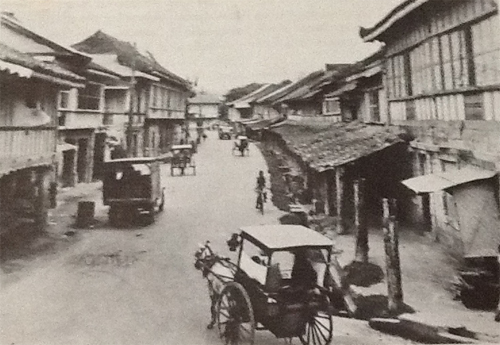
It may look like any ordinary street but this crowded stretch overflowing with shops, stalls, sidewalk vendors, people, and passenger jeepneys is, believe it or not, the oldest in the Philippines.
This thoroughfare in downtown Cebu City known as Colon Street existed way back in time, since Spanish conquistador Miguel Lopez de Legazpi commissioned its creation in 1565 as part of a settlement called “Villa de San Miguel (St. Michael’s Town)” that also had Fort San Pedro as its nucleus.

It was named after Italian explorer Christopher Columbus, who sailed for the king and queen of Spain and whose name translates in Spanish to Cristobal Colon.
Today, no trace remains of Legazpi’s Colon or as it was during the 19th century, with its rows of two-storey houses facing one another on both sides of the street. The residential homes of olden times featured a store, shop, or office on the ground floor and living quarters upstairs and belonged to the forebears of prominent names in Cebuano society like Briones, Gantuangco, Lu Do, Rallos, Osmeña, Singson, Cuenco, and Martinez, among others.

Colon Street connects to the old Chinese district of Parian, where wealthy Chinese-Filipino merchants used to live and do their trade in the 1950’s. The name Parian reportedly comes from “paripari,” which means “to sell or barter.”
Before the 90’s, when malls sprung up in other areas of the city, Colon was the center of economic activities in Cebu. Before SM and Ayala, Cebuanos flock to commercial establishments in Colon like Plaza Fair, Gazini Plaza, Rosita’s, and Gaw Trading, Inc.
Now, Colon is a jumble of mid-size department stores, a university and some computer schools, movie houses, fast-food restaurants, grocery stores, shops selling glasses, phones, appliances, and other stuff, and stalls displaying dresses and movie and music DVDs.
The street has developed a bad reputation through the years as a lair of pickpockets and snatchers. If you do decide to check out this historic street in Cebu, go with a group. Don’t wear jewelry or bring valuables with you.
An obelisk detailing Colon’s historical significance stands at its northern end, and on either side of the street are markers on lampposts that contain information about the establishments or houses that used to be in the area.
How to get there
If you’re in Cebu City, getting to Colon is easy. Almost all jeepneys that ply different city routes end up in or close to Colon Street. By taxi, Colon Street is 15-20 minutes away from SM or Ayala.
(This article is part of a project on Cebu tourism supported by Smart Communications, Inc., the wireless leader in the Philippines.)


It makes me sad that it isn’t that attractive to tourists because of security reasons but to everyone who is visiting Cebu, this is a great street to visit because of its historical value.